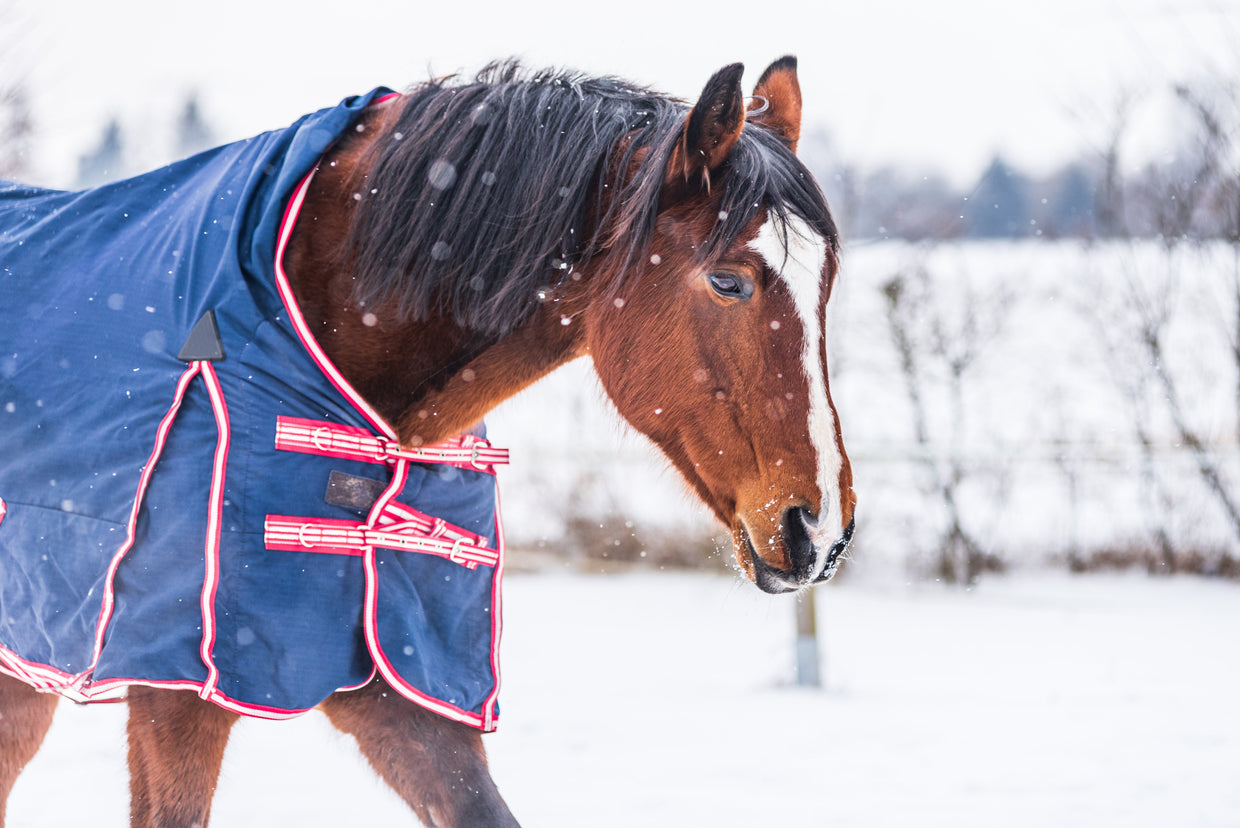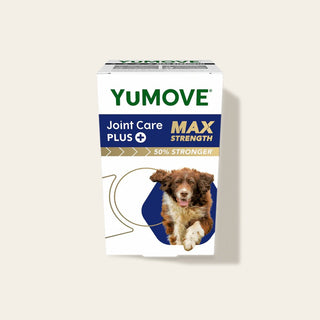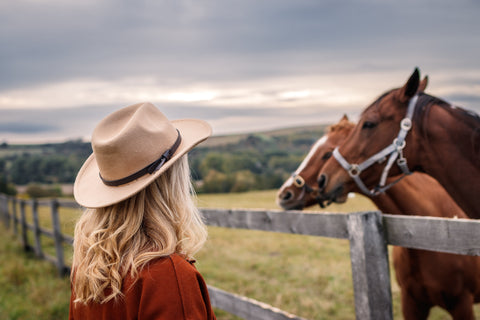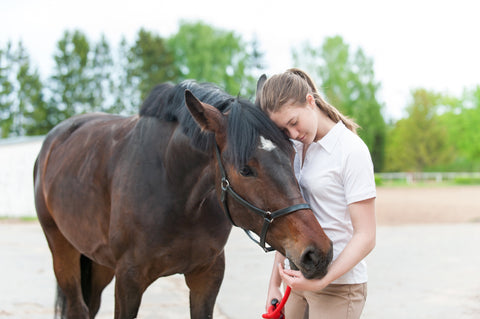

How to stop horses' manes getting rubbed out by winter rugs
Winter rugs and neck covers are the perfect way to keep your horse warm and cosy over the colder months. However, unfortunately they can come with their downsides, too – namely their ability to rub off all or part of the mane. Not ideal for keeping your horse looking their best. Thanks to the heaviness of winter rugs, they can also irritate skin and cause a heat rash, which in turn, can lead to your horse rubbing and scratching this area and loosing sections of their mane. So, what can be done about it? To avoid this pesky side effect of winter rugs, we’re going to look at how to make sure your horse’s rug is fitted correctly, as well as providing some practical tips on how to help their mane grow back if it’s lost its fullness.
Problem: Badly fitting rug
A rug that doesn’t fit correctly could well be the reason why your horse’s mane is looking less than luscious over the winter months. Your equine companion needs to be able to move freely and easily whilst wearing these additional layers – not only will they experience discomfort if it’s either too big or too small, but the poor fit will also cause rubbing around the mane, and it’ll become brittle and break off. Moral of the story? A well-fitting rug is a must.
Solution: Choose your rug wisely
There’s a lot of discussion among horse owners about which brand of rug is the kindest to manes, but it’s worth remembering of course that every horse is built differently. Therefore, it’s a good idea to try a few rugs out until you find the best style for your horse, by either borrowing from others or trying out newly bought rugs on your horse over a bed sheet or summer sheet, so you can return it if needed.
1. Pick a standard neck rug
Over-heating caused by being over-rugged is the most common cause of mane loss over the winter months. A combo-neck rug with a detachable neck cover is often thought to be a solution to rubbed out manes, however the opposite can be true. Your horse is more likely to itch their manes due to the heat generated from the extra neck layer. If your horse is clipped and needs the neckpiece for extra warmth, go for a lighter-weight option, or only use overnight or on especially cold days.
2. Check the fit
If a rug is too big, it’ll shift up the neck and rub out the mane, while a too-small rug will sit too tightly on the mane with the same resulting mane loss. The rug should fit neatly around the wither and shoulders so your equine pal can move freely. Check that the seam between the tail flap and rug sits at the point of the tail, and the surcingles are tight enough to keep the rug securely in place, with a hand’s width between the stomach and straps. If you find your horse is between sizes, always go for a rug that’s slightly too big over one that’s slightly too small. Here’s a handy illustration showing how to measure your horse for a rug in feet and inches:

3. Use an anti-rub bib
One way to keep your horse’s mane in tip-top condition is to add an anti-rub bib to your horse’s wardrobe. You can use one under both stable and turnout rugs, keeping friction and rubbing from their rugs to a minimum.
Problem: Greasy mane
Another cause of mane rubbing is dirty neck covers. The dirt and grease that builds up on the mane is shifted onto the neck cover which, in turn, then rubs back onto the mane, and the cycle continues. All this build-up of grease results in a sticky mane, which is pulled out when your horse moves their head.
Solution: Wash the mane regularly
A clean mane can help hugely in the fight against seasonal mane loss. When grease builds up on your horse’s mane, it can block the follicles on their neck, making it harder for the mane to grow back. While it can be too cold to give your horse a full body wash, you can brush their mane through with a small amount of shampoo. To avoid your horse getting a chilly neck, opt for a mild day and use warm water, then use your fingers to rub the shampoo into the roots of the mane.
How to help your horse’s mane grow again
1. Feed them nutrients
To help improve the condition of your horse’s mane so it grows back to full strength, a nutritional supplement is a great way to target the issue from the inside. If your horse is lacking in minerals and vitamins in their everyday diet, a supplement may be the best way to up their nutrition – and their mane will certainly thank you for it! What’s more, check the quality of the hay or haylage they’re eating. Soaking them in water can sometimes remove their most nutritional elements, so keep soaking to a minimum, and choose the highest quality of hay or haylage you can find. Read our blog for more information on the difference between hay and haylage.
2. Trim the mane
Just like when you pay a visit to the hairdresser to remove your split ends, your horse benefits from a quick trim, too. Damage at the tip of the mane can spread up the hair shaft and into the roots, damaging any new growth. Therefore, you can boost your horse’s mane by taking a razor or scissors to any dead, split or damaged ends several times a month, depending on how bad the condition is. If your horse has a long mane, don’t worry – you don’t need to lop the whole thing off to keep it healthy. Just focus on the damaged ends and leave the healthy section intact.
3. Use detangler
Coconut oil is one secret weapon that many horse owners swear by in the battle against mane loss. In fact, any mane detangler will work equally well. Try spraying your horse’s mane with the detangler before putting on their rug and neck cover, and this will help prevent rubbing and promote regrowth on thinning areas. Another tip to reduce mane loss is to only use a brush on their mane if you’re attending a show, or if one section has become especially tangled. Otherwise, gently brush through their mane using your fingers to avoid unnecessary pulling and breakage.
4. Plait the mane
If your horse has a longer mane, then plaiting it is a great way of protecting it from thinning. Of course, this may be a bit trickier for horses with less lustrous manes, but work with what you have. Individual plaits work best, as this helps larger areas from being rubbed away.
5. Keep hands high
One last pointer for riders who often rest their hand on their horse’s neck – try to avoid this where possible. Reducing contact with the mane can help minimise any thinning or matting.
Do you have any foolproof ways of stopping your horse’s rug rubbing the mane up the wrong way? Stop by our Facebook and Instagram pages, and tell us your tips!



